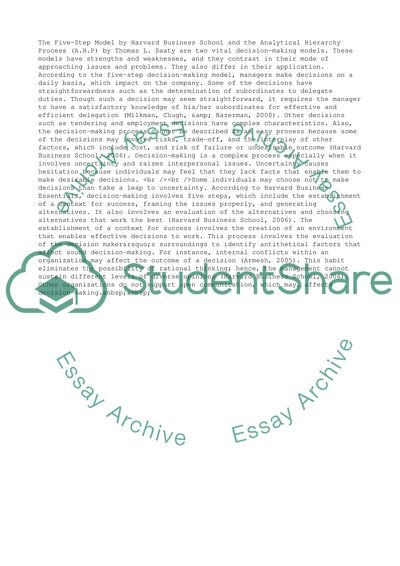Cite this document
(Decision-Making Models Report Example | Topics and Well Written Essays - 1500 words, n.d.)
Decision-Making Models Report Example | Topics and Well Written Essays - 1500 words. https://studentshare.org/business/1400417-decision-making-models
Decision-Making Models Report Example | Topics and Well Written Essays - 1500 words. https://studentshare.org/business/1400417-decision-making-models
(Decision-Making Models Report Example | Topics and Well Written Essays - 1500 Words)
Decision-Making Models Report Example | Topics and Well Written Essays - 1500 Words. https://studentshare.org/business/1400417-decision-making-models.
Decision-Making Models Report Example | Topics and Well Written Essays - 1500 Words. https://studentshare.org/business/1400417-decision-making-models.
“Decision-Making Models Report Example | Topics and Well Written Essays - 1500 Words”. https://studentshare.org/business/1400417-decision-making-models.


